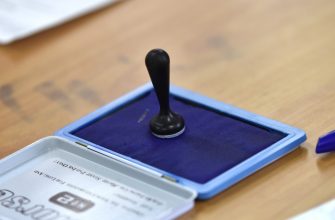The pioneer of Soviet tape culture was a native of the city of Ordzhonikidze named Yuri Morozov. In the early seventies, he moved to Leningrad and, after graduating from a technical university, got a job as a sound engineer at the local branch of the Melodiya company. By this time, he had already recorded at home the Jimi Hendrix Cherry Orchard magnetic album, reflecting the traditions of psychedelic rock on both sides of the Atlantic. The sound of Morozov’s debut opus, recorded in 1973 with the help of a tube mixer, an amplitude modulator and two stereo tape recorders “Jupiter 201” and “Idas”, resembled the atmosphere of Frank Zappa’s early albums with its effects.
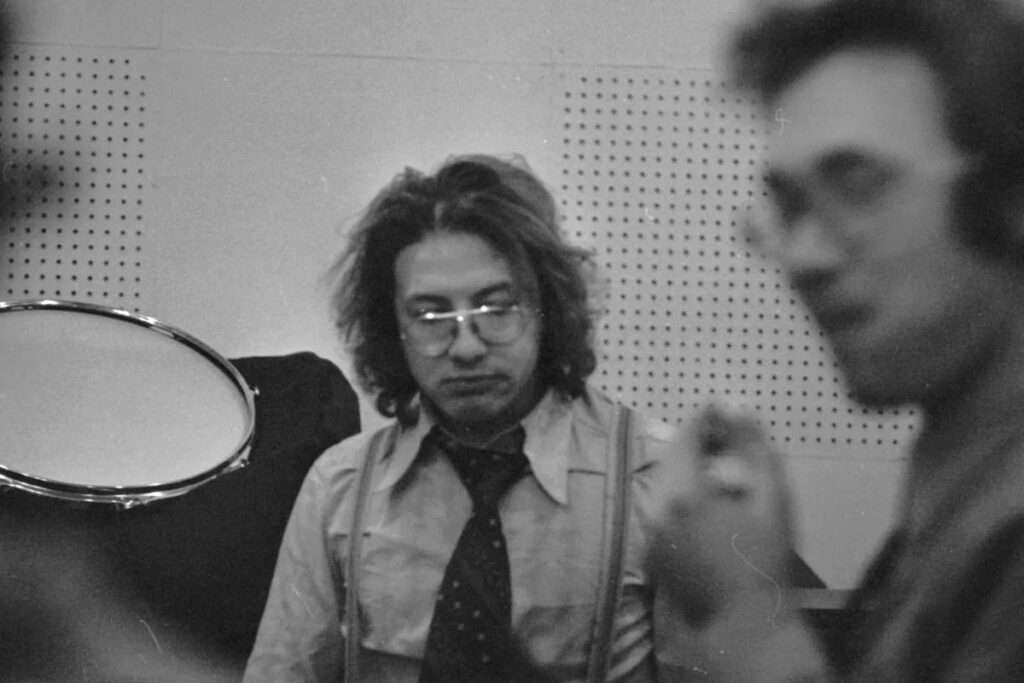
Alexander Pantykin and Ilya Kormiltsev during the recording of the magnetic album “15” by the Urfin Juice group, 1982. Photo by Oleg Rakovich.
The hermit Morozov rarely gave concerts and for many years was a studio marginal. Nevertheless, his tapes were actively circulated throughout the country. It is curious that already in those years Mike Naumenko repeatedly criticized him – partly for the pseudo-religious orientation of the texts, but their views on fixing creativity were fundamentally different. The future ideologist of the Zoopark group acted much easier by recording the first acoustic album right on the banks of the Neva.
Together with Grebenshchikov, they performed compositions “through one”, the sound was “filmed” from the air, and then they called a friend Andrei “Willy” Usov, who, using a Zenit camera and Moment glue, designed the back and front sides of the tape reel. “The recording quality of the All Brothers and Sisters album was awesome,” Mike later recalled. “But those were good times.”
At this time in Moscow, the minds of students and schoolchildren were captured by the “Time Machine”, on its account there were dozens of underground concerts and first place at a rock festival in Tallinn, but the group still did not have its own magnetic album.

Group “Nautilus Pompilius”. Photo by Ildar Ziganshin, the picture became part of the design of the magnetic album “Moving”, 1983.
The team of Andrey Makarevich got into the semi-legal studio “by pull” – thanks to his friend Alexander Kutikov. Speaking as part of Leap Summer, he got a job as a sound engineer at the GITIS speech studio, where he was on the staff list as a “cleaner”. During extracurricular time, he had the opportunity to record albums of his friends: “Leap Summer”, “Time Machine” and “Resurrection”.
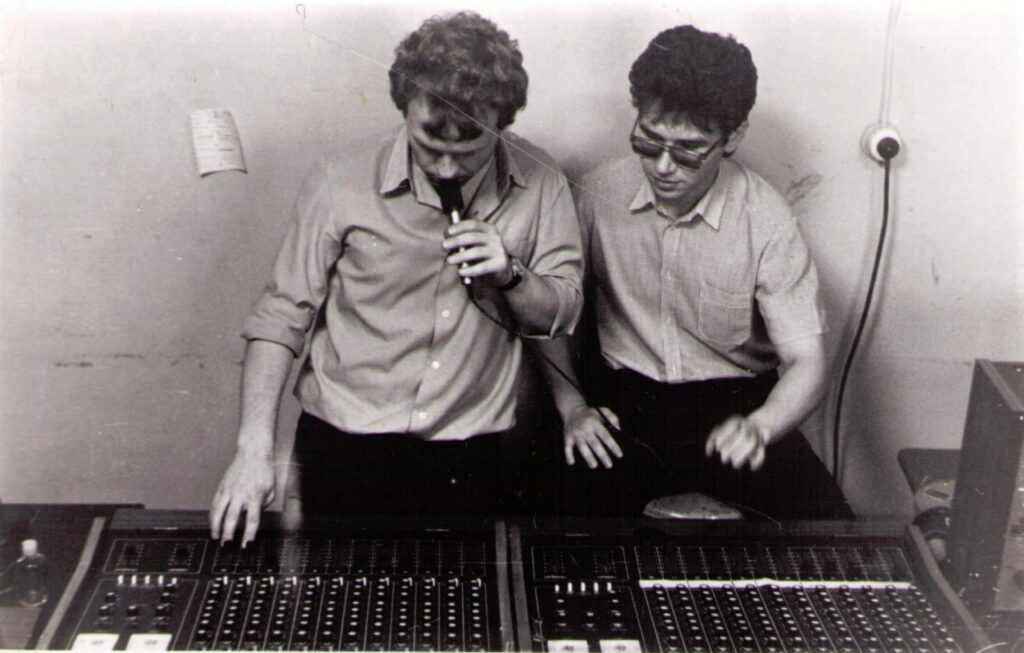
Alexander “Colonel” Gnoevs (legendary sound engineer) and Andrey “Pioneer” Kotov (groups “Trek” and “Agatha Christie”), 1984. Photographer Dmitry Konstantinov.
It is curious that, unlike Leningrad, the Moscow tapes were not made out by the musicians in any way – everyone in the capital was so eagerly waiting for these compositions that the criterion was cosmically simple: “so that the words are intelligibly heard and understood.” Then, through underground distributors, whose tape recorders worked for 24 hours a day, these self-made recordings scattered around the country like a bullet. Song titles were written on cardboard boxes with a pencil or ballpoint pen. As the musicians themselves reasonably believed, fans already knew all their songs by heart. And, therefore, excessive information was useless to them.
At the Leningrad concerts of The Time Machine, the young alchemist Andrey Tropillo studied the basics of sound recording. After graduating from the physics department of Leningrad University, he became seriously ill with rock. “My sister sent me mohair wool for a sweater from abroad,” says Tropillo. “Without a moment’s hesitation, I sold the mohair for 110 rubles and with the proceeds I bought a double album by The Beatles, which appeared in England a few days ago.”

Leonid Fedorov, Alexey Vishnya and Viktor Tsoi, 1987. Photo from the archive of the Leningrad Rock Club.
In the fall of 1979, he got a job at the House of Young Technicians on Okhta. The section led by Andrey Vladimirovich was officially called the “acoustics and sound recording circle”. The future musicians of “Zero”, “Prepinakov”, “Dangerous Neighbors”, sound engineers Slava Egorov (“Aquarium”) and Alexei Vishnya (“Cinema”) went through this “school of life”. It is curious that as an ideal recording, Tropillo liked to put to schoolchildren “The Wedding of Cretins” (1976) and “Where they gave darkness” (1977) – the tape works of Yuri Morozov, who, in turn, tried to help his friend with outdated consoles, tape recorders and a semi-defective film, which was annually written off in the company “Melody”.
The first half of the 80s was the high point of Tropillo and his famous studio on Okhta. At night, they recorded their best albums Aquarium and Zoo, Cinema and Picnic, Alice and Zero here. Tropillo worked completely disinterestedly, developing as a sound engineer by leaps and bounds. Subsequently, many of these albums were released on vinyl records and CDs.

Alexander Pantykin, leader of Urfin Juice, in the process of recording an album, 1982. Photo from the personal archive of Alexander Pantykin.
In the Urals, where Komsomol organizations were liberal and there were student trade unions, Sverdlovsk rock bands miraculously managed to penetrate local television (or film studios) and, using relatively honest documents, record their immortality.
The Ural school of directing quickly arose: a folk craftsman named Colonel recorded three anonymous albums by the Trek group, Leonid Porokhnya – Urfin Juice, the early Nautilus and Nastya Poleva, and Oleg Makarov recorded “breakthrough” album “Separation”.
In Siberia, Yegor Letov’s home studio in Omsk was a real “center of power”, where the leader of the “Civil Defense” recorded on crippled Soviet equipment 30-minute garage rock reels, as well as avant-garde opuses of the “Communism” project and albums of like-minded people: Yanka Diaghileva, Manager, Black Lukich. A few days later they were already listening in Novosibirsk and Tyumen, Sverdlovsk and Moscow.
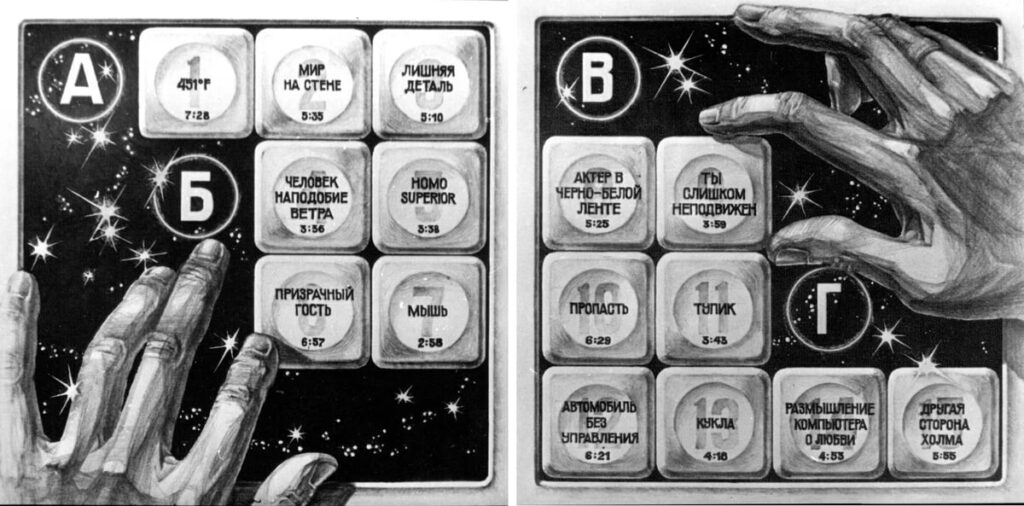
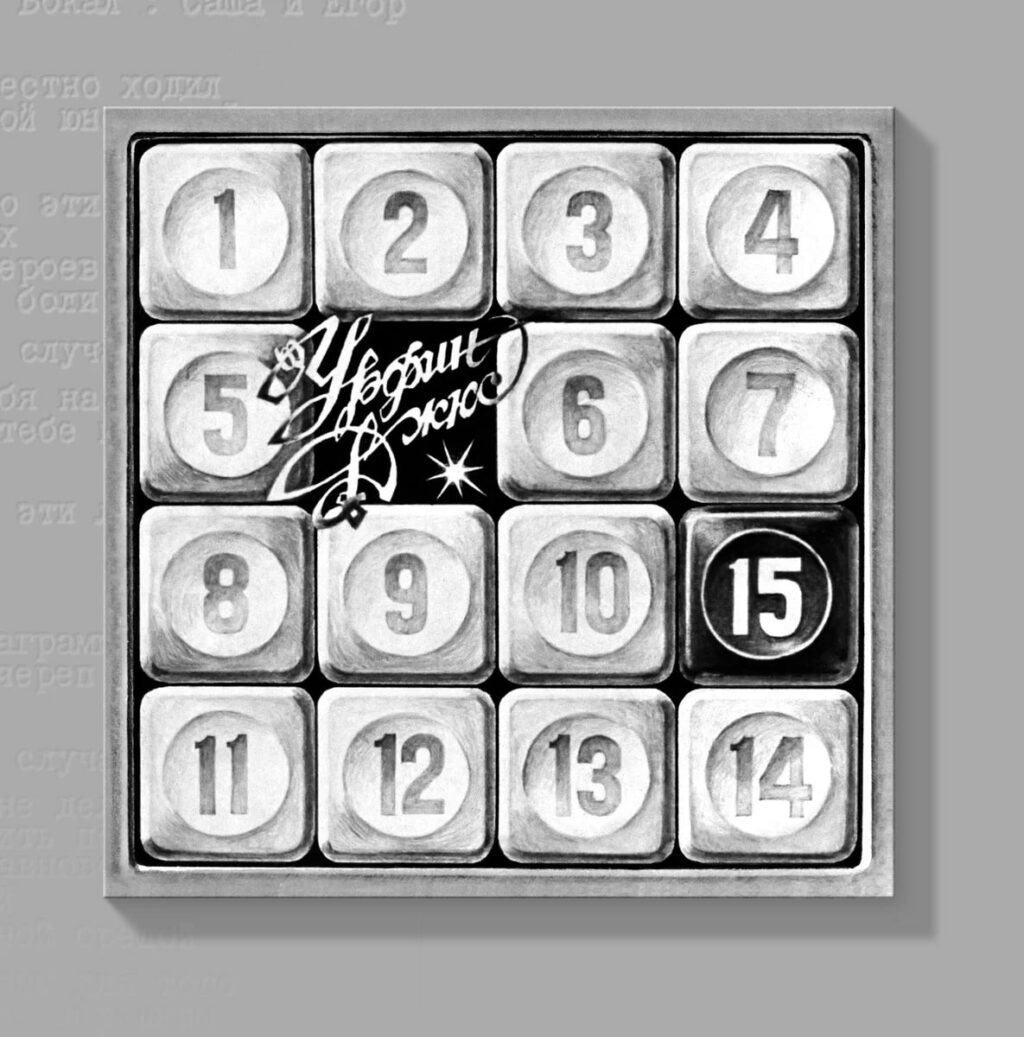
The design of the magnetic album of the Urfin Juice group, 1982. Designer and artist Alexander Korotich.
By this time, the “Union of Writers” was in full swing in the country, which was engaged in the mass distribution of tape reels and cassettes. Recordings were transmitted at crazy speeds over the “wireless Internet”, with the help of word of mouth and the ability to copy tapes from the happy owners of two or more tape recorders. This infrastructure was actively supported by samizdat, as well as by designers – authors of photo covers and the ideologists of rock bands themselves. The most famous “works of art” are “Triangle” and “Radio Africa” by the group “Aquarium”, “Sweet N” and LV T-shirt, “Invisible” and “Separation” by the group “Nautilus Pompilius”, as well as more than forty albums “DK” .
After the victory of perestroika, Melodiya opened the doors of its studios to unofficial rock musicians. In the center of Leningrad, Aquarium recorded the Equinox album, in Moscow Polite Refusal, All-in and Alice worked quite officially – in other words, the fight against the system was successfully completed. The first independent labels began to release on vinyl “Civil Defense” and “Opera for the Rich” by Sergei Kuryokhin, “Songs of Vertinsky” and “Russian Album” by Grebenshchikov, records of groups of the Moscow rock laboratory.
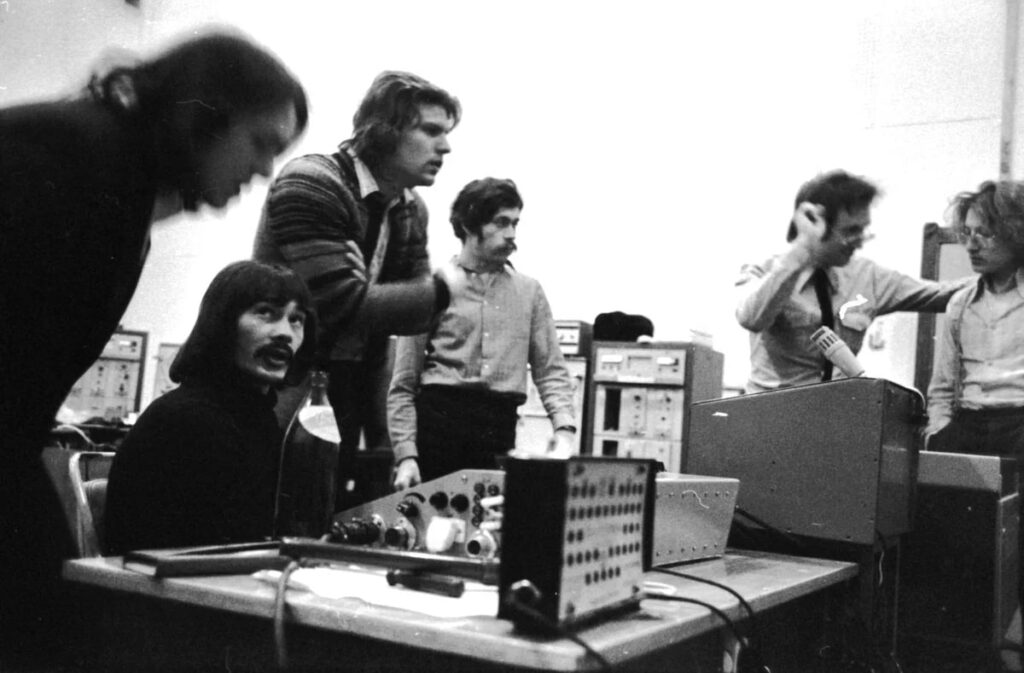
Listening to the recording of the magnetic album “15”, 1982. From left to right: Viktor “Pinya” Reznikov, sound engineer Sergei Sashnin, assistant sound engineer Yegor Belkin, Sergei Morozenko, Ilya Kormiltsev and Alexander Pantykin. Photo by Oleg Rakovich.
At this time, in parallel with the organization of the festival “Aurora-89”, Andrei Tropillo establishes contacts with Polish cassette factories, where he releases new albums of St. Petersburg bands. The ingenious producer took over the ingenious sound engineer in Andrey Vladimirovich. “George Martin” reincarnated as “Richard Branson”.
The activity of the godfather of the Soviet tape culture in the 90s is an ideal plot for a detective. Having become the director of the Leningrad branch of Melodiya, Tropillo began releasing vinyl records of Western rock bands on his own ANTROP label. Copyrights and authenticity of Led Zeppelin, Rolling Stones, Jethro Tull discs were the last thing he worried about.
“No one will be able to prove to me that I am violating Russian laws,” Tropillo said, confidently minting words, looking into the eyes of a reporter from The New York Times. The cover of “Anthrope’s” “Sergeant Pepper” stared blankly from the wall at this whole theater of the absurd, where among dozens of familiar physiognomies flaunted the spiritual face of Andrei Vladimirovich.







